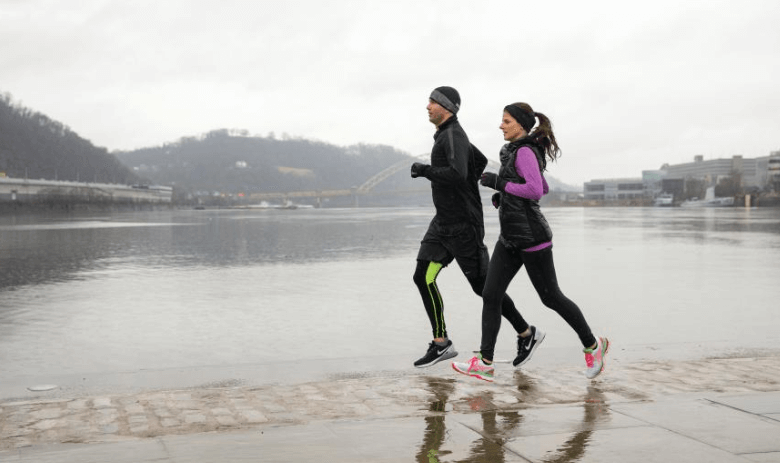How to Properly Layer Running Gear for All-Weather Performance

Maintaining a comfortable body temperature on a cold run is challenging. You want to be warm from the start but want to stay hydrated.
Running layering is the best way to balance these goals. Layers allow you to adjust to changing weather and temperatures without losing performance. The layers work together to wick sweat, trap heat, and protect you from the elements.
Base Layer
Being the skin’s closest layer, the base layer aims to wick away moisture to keep you comfortable and dry. It should be made of a light, soft, and breathable material like merino wool. The tight fit of a base layer creates compression that increases blood flow, aiding in muscle recovery and performance. To explore quality base layers that cater to these needs, click here for a selection that combines functionality and comfort.
The type of base layer you wear depends on the weather and your activity level. Thinner layers are more effective in warmer climates, while heavier base layer materials are best for colder conditions or high-output activities.
Generally, synthetic fabrics like polyester and nylon do an excellent job of wicking sweat but tend to stink after wearing them for multiple days. Natural, odor-free merino wool is an excellent choice for runners because it is durable and naturally antimicrobial.
When temperatures drop a bit, we recommend adding a mid-layer for insulation and a wind or rain shell to block the elements. Our men’s and women’s flannel shirts are ideal for fall and winter because they keep you warm without adding too much bulk.
The mid-layer adds warmth and keeps you dry by trapping body heat between your base and outer layers. A fleece or synthetic fiber works well, depending on the temperature. The insulating properties of this layer also help you stay active longer since they will not chaff your skin when wet from sweat.
Mid-Layer
If you want to keep yourself warm on cold, wintery runs, it’s important to layer the right way. You can easily regulate your temperature by wearing multiple thin layers without a bulky jacket. A mid-layer, also known as an insulating layer, traps body heat and creates an air barrier to help you stay warm. This can be a lightweight merino wool, feather down, or synthetic insulation garment worn over your base layer.
A great feature of a performance mid-layer is thumb holes. These can keep your sleeves in place while you run, making taking on/off your other layers easier. Performance mid-layers also typically have zippered pockets to store essentials like your phone or keys.
Visit Magazines it’s a good idea to have a few different types of performance mid-layers in your arsenal to choose the best one for your running conditions. For example, you’ll want a lightweight option for icy and dry conditions where the wind may not be a factor, but you will still need an insulated layer to trap warmth next to your skin.
On the other hand, you’ll need a heavier mid-layer for icy and wet conditions where you’ll need to be protected from wind, rain, or snow. In addition to the insulating features of a mid-layer, you’ll want it to be water-resistant or, better yet, waterproof so snow, sleet, and rain can’t soak through your insulated layer and cool you down.
Read also Voyager Digital 3ac 650mmcsweeney Theblock
Outer Layer
Winter running is a unique experience with crisp air, snowy treetops, and glittering paths. But it’s also challenging and can be dangerous if not done correctly. This is why runners need the proper gear to manage moisture, maintain a steady core temperature, and protect against wind and snow.
The base layer should be soft, light, and made from synthetic materials designed to wick moisture away from the skin. This prevents excessive sweat saturation, which can lead to hypothermia. Some people may wear two base layers, such as a compression top under a long-sleeved shirt or half-zip.
Next comes the mid-layer that provides insulation. This can be either a synthetic or natural material that traps heat to keep you warm and comfortable. The outer layer, or shell, is a barrier to prevent cold weather and wind from penetrating your insulating layers. The best running jackets will be wind and waterproof while remaining breathable, allowing perspiration to escape without soaking your base or mid-layer.
It’s a balancing act but a must-have for any serious winter runner. This type of jacket will also offer a good amount of flexibility to adapt to changing weather conditions. For example, it’s not uncommon to encounter a sudden change in temperature during a run. Hence, a jacket that can be easily stripped down is essential for keeping your body in control and protected.
Accessories
Cold weather running requires special considerations to protect your extremities. Gloves or mittens to keep your hands warm are essential, along with a hat and headband to keep the sun off your face and warmth in your ears. In addition, a pair of waterproof or Gore-Tex running shoes is necessary for keeping your feet dry and warm.
The number of base layers you wear will depend on the temperature and your specific activity level. Still, a layering system designed specifically for performance is critical for staying comfortable as you run in varying temperatures and unpredictable weather conditions. Thin and breathable, the right technical layering system lets you stay comfortable while running without overheating.
A good starting point is a base layer of light, moisture-wicking material, such as wool or quick-dry synthetics. Then, add a mid-layer to keep you warm and comfortable. Finally, top off your outfit with a water-resistant jacket or, in ideal situations, completely waterproof.




